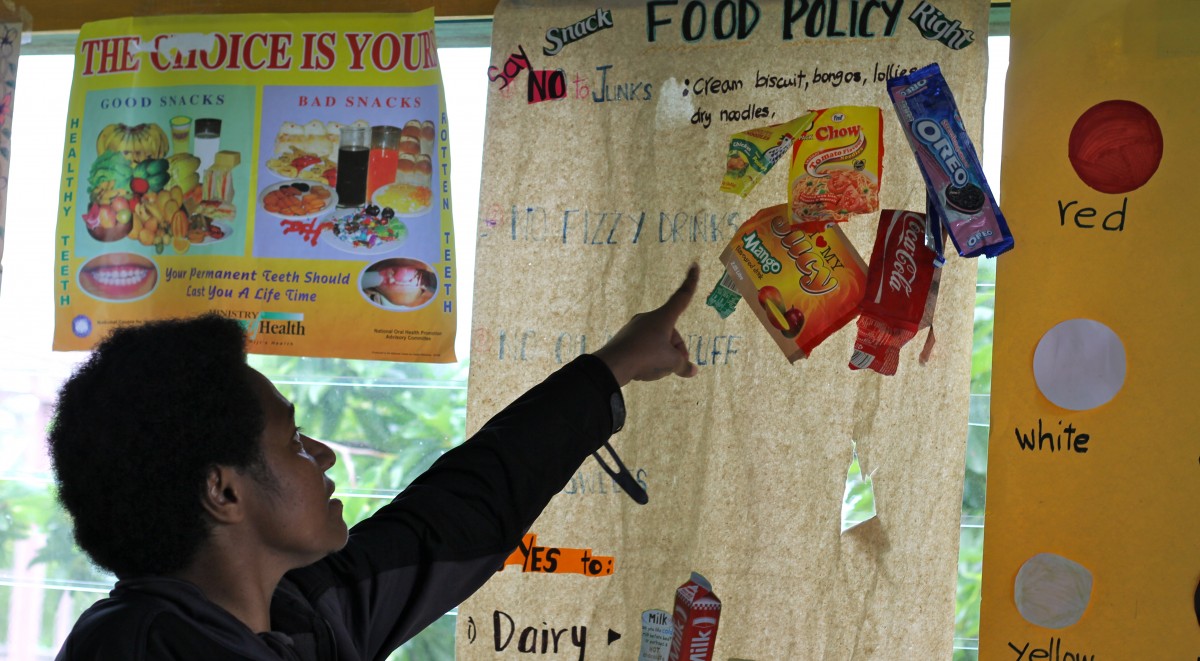
Preventable diseases like diabetes have become the biggest killer of people in the Pacific. In Fiji the rate of diabetes is among the highest in the world with statistics showing one in five people being affected by it. According to the International Diabetes Federation it’s estimated 33% of people in the surgical wards of Fiji are diabetes patients.
In children, the rates of malnutrition, which includes underweight and overweight children, are increasing and can be seen to lead to serious diseases in later life. Lack of access to nutritious and healthy food or balanced meals are common causes of these preventable illnesses but one local teacher is working to stop children in her community from becoming statistics.
Matelita Rauluni is the Head Teacher from Valenicina Preschool in an informal community settlement just outside Lami town in Fiji. In 2008, Matelita together with other community leaders established a preschool in the community after realising that many young children weren’t able to access formal schooling. This preschool was established through Save the Children’s Vuli Taumada Shisak (VTS) Project.
After becoming an accredited teacher and continuing to educate every child under the age of 5 in her community she realised the effect of unhealthy diets on her students learning.
Matelita was part of a community health training run by Save the Children Fiji that helped equip local teachers with an understanding of what food children needed to develop. She then set about teaching her classroom on what they need to be healthy and strong.
She has since made it her mission to combat the rising disease rates by establishing a ‘No Junk Food Policy’ in her classroom. This policy stops any child from bringing fatty or sugary food in their lunchboxes and she said the difference has been noticeable to children’s health.
“Before the Junk Food Policy was here the kids were very sick. They got sick quite often and were not really active during activities, so once I changed the food and got them used to eating healthy food and drinking water I really find (sic) good changes in them.
“They are healthy and active and they respond when you talk to them. They communicate well in their groups – so food is one of the contributing factors to the upbringing to a child,” she said.
Matelita has also spoken to the parents in her community on the benefits of healthy and nutritious meals. As many of her students are from poor backgrounds she has taught them the benefits of sharing by encouraging those that could afford to bring lunch, to bring a little extra to share with their classmates.
She said many students now ask their mothers to pack extra vegetables or fruit for their friends at school who are not able to afford lunch everyday. Since this community shift she explains the differences in the children’s ability to learn are much better with students being happier, more active and more engaged.
*The Community Child Nutrition Project supported this training and is run by Save the Children Fiji and funded by Australian Aid and Fiji Community Development Program. The establishment of local preschools across Fiji is part of the Vuli Taumada Shisak program of Save the Children Fiji funded by New Zealand’s Ministry of Foreign Affairs and Trade (MFAT)
